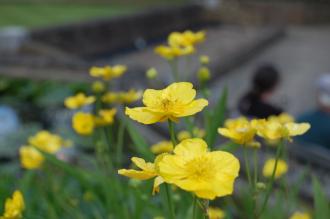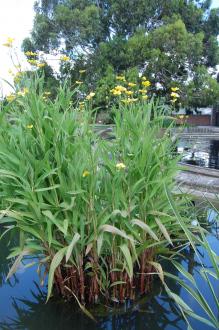
Ranunculus lingua Flower (30/06/2012, Kew Gardens, London)
Position: Full sun
Flowering period: Summer
Soil: Wet, poorly drained (water depth of 15 – 25cm)
Eventual Height: 1.2m
Eventual Spread: 1m
Hardiness: 3a – 9a
Family: Ranunculaceae
Ranunculus lingua is an upright deciduous, marginal perennial plant. Its green/ blue leaves are alternate, lanceolate with sparsely serrated/ entire margins, up to 15cm long and 2cm broad. Its branches. Its trunk. Its bark. Its yellow flowers are bowl shapes, have five petals, up to 5cm across and borne in panicles on branched stems. Its fruit is a long achene and up to 3mm long. Its roots produce runners which help to spread this plant.
Ranunculus lingua, commonly known as Greater Spearwort, Great Spearwort or Water Spearwort, is native to most of Europe (including the UK), Russia and eastern China. In its native habitat it grows in muddy lake and pool margins.

Ranunculus lingua (30/06/2012, Kew Gardens, London)
The etymological root of the binomial name Ranunculus is derived from the Latin rana meaning’frog’, in reference to the plants liking for damp places. Lingua is from the Latin meaning ‘tongue’, in reference to the shape of the leaf.
The landscape architect may find Ranunculus lingua useful in naturalist planting schemes at pond and lake margins.
Ecologically, R. lingua is attractive to pollinating insects.
R. lingua prefers wet, fertile, poorly drained soils. It tolerates most pH of soil. It prefers a water depth of 15 – 25cm.
Ranunculus lingua requires little maintenance. Large clumps may be divided in spring or autumn.

